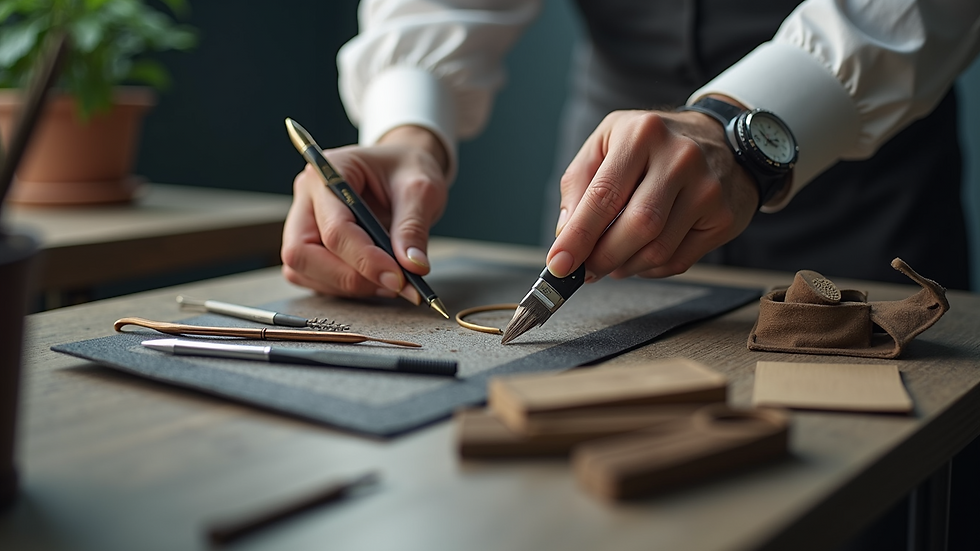Starting your permanent makeup (PMU) journey can be an exciting yet daunting experience. If you're considering this transformative art form, it's essential to understand what to expect as you embark on your path to becoming a certified PMU artist. This blog post will guide you through the various stages of your PMU journey, what training entails, how to get licensed, and tips for building a successful career.
PMU Journey Overview
The PMU journey can be broken down into several key stages: training, licensure, practice, and building a clientele. Each of these stages comes with its own set of expectations and challenges, so understanding them will prepare you for success.
The first stage is training, where you will learn the fundamentals of PMU techniques, color theory, skin anatomy, and hygiene practices. Hands-on experience under an expert's guidance is crucial in mastering these skills.

In the training phase, you may also cover various PMU areas such as eyebrow microblading, eyeliner tattoos, and lip blush techniques. It is advisable to select a well-reviewed training program like The Perfect Arch to guarantee comprehensive education.
Choosing the Right Training Program
Choosing the right PMU training program can significantly influence your journey. Research different schools and instructors to find one that fits your needs. Look for programs that offer not only theoretical training but also ample hands-on practice.
Many programs will provide a permanent makeup class that covers essential skills and techniques. You should verify the qualifications of instructors and past students' reviews to evaluate the program's success.
Consider the course structure, duration, and the cost involved. Keep in mind that while cheaper options exist, investing in a quality program can pay off in the long run by improving your skills and increasing your earning potential.

Another critical factor to consider is the certification. Ensure that the program adheres to all legal standards and provides a certification that will help you secure a license in your state.
How do I get my PMU license in NJ?
If you are starting your PMU journey in New Jersey, obtaining your PMU license is essential. New Jersey has specific regulations regarding the licensing process, which requires you to meet certain requirements:
Complete a State-Approved Training Program: The first step is completing a state-approved PMU training program. This program should cover all necessary topics and safety protocols.
Pass a Bloodborne Pathogens Course: Since PMU involves blood, you will need to take a course on bloodborne pathogens, which educates you on preventing the transmission of diseases.
Submit Your Application: After completing your training, you’ll need to submit a license application to the New Jersey Division of Consumer Affairs.
Pay the Required Fees: Every license application comes with a fee. Make sure to budget for this when planning your course of study.
Obtain Insurance: Although not always mandatory, getting liability insurance can protect you and your business as you start your PMU career.
These steps will set you on the right path towards becoming a licensed PMU artist in New Jersey.

Practicing Your PMU Skills
After obtaining your license, practicing your skills is crucial. Initially, you may want to work on practice skins or models before moving on to clients. This practice phase allows you to refine your techniques and build your confidence.
During your practice sessions, focus on your precision and speed. Document your progress with photos and notes to review your improvements over time. Seek feedback from mentors or peers to gain insights into your technique and service delivery.
As your skills develop, consider offering discounted services to gain real-world experience. Many new PMU artists find that creating a portfolio of before-and-after images can help showcase their work to potential clients.
Building Your Clientele
Once you feel confident with your skills, it's time to start building your clientele. Here are several effective strategies to attract clients:
Social Media Presence: Utilize platforms like Instagram, Facebook, and TikTok to showcase your work. Post before-and-after photos, client testimonials, and educational content related to PMU.
Referral Program: Encourage satisfied clients to refer friends or family. Consider offering them a discount on their next service for every new client they send your way.
Networking: Attend beauty expos and industry events to meet potential clients and other PMU artists. Building connections can lead to referrals and opportunities for collaboration.
Local Advertising: Consider advertising your services in local beauty shops, salons, or nail studios. Flyers, posters, or even business cards can help get your name out there.
As you start seeing clients, always prioritize customer service. Making clients feel relaxed and appreciated will lead to positive reviews and recommendations.
In conclusion, embarking on a PMU journey requires dedication, education, and practice. With the right training and commitment, you can build a successful career as a PMU artist. Embrace the journey, keep learning, and enjoy the transformative process of helping others feel beautiful.


Comments